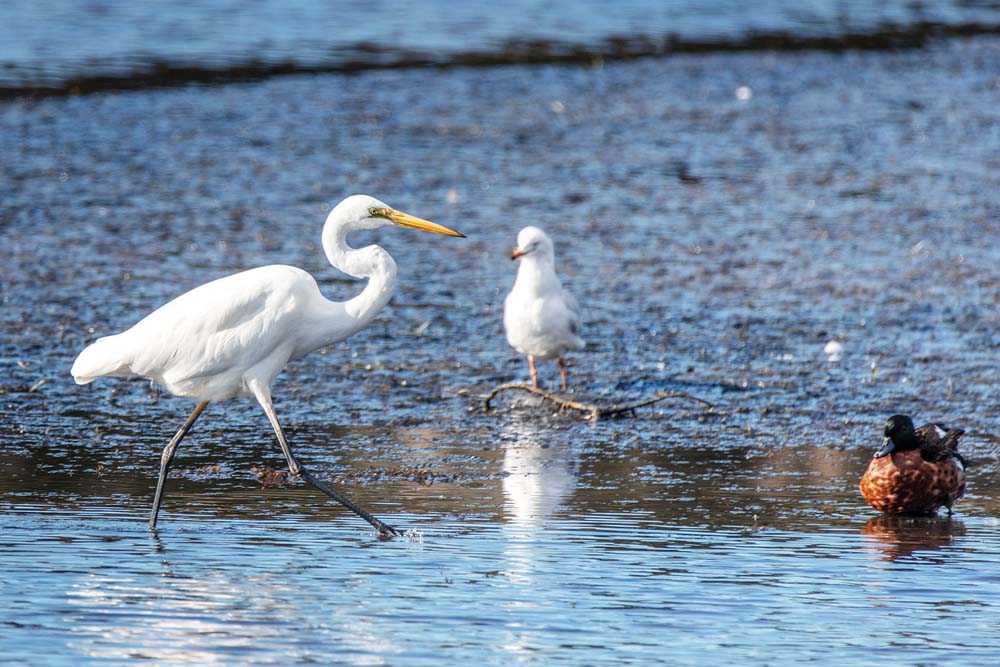
RESIDENTS will be asked to consider the environmental effects on Balcombe Creek of their continuing opposition to having their roads sealed.
Unmade roads are being blamed for the gradual silting of the creek’s estuary and Mornington Peninsula Shire has set aside $150,000 to help “save” the estuary.
“The rate of sediment flowing into the estuary is the greatest threat facing the waterway. Without solving this, the estuary will be completely silted up within our grandchildren’s lifetime,” BERG MM president Graham Hubbard said.
“For years we have been having talks and meetings with the shire and Melbourne Water about the sediment problem which is basically caused by unmade roads. It’s one thing to recognise a problem – it’s another to do something about it.
“Mornington Peninsula Shire recognises the threat and should be congratulated for committing a slice of the budget to solving this significant environmental problem that’s not going to go away. It will only get more expensive if not tackled now.”
In a letter to Mr Hubbard, the shire’s financial controller Bulent Oz said that in 2018-19 the shire would spend $150,000 on “further sediment reduction investigations and delivery of viable priority actions”.
The shire will investigate infrastructure options for sediment reduction for Seppelt Avenue and in the master plan being developed for Ferrero Reserve. This includes the recommended option of sealing the car park.
Further investigation of sediment reduction at the Henley Street gross pollutant trap, which is the responsibility of Melbourne Water, will be carried out.
Mr Oz said a special charge scheme for road construction of Augusta Street was being considered and would incorporate the environmental impact on the estuary.
Mr Oz said owners’ information nights had been undertaken with residents in and around Augusta Street and the next stage was to interview them “to address the shift in the environmental impact on Balcombe Estuary, if the road is deemed suitable for being sealed”.
Referring to flows from Kia Ora Avenue and Walpole Street, Mr Oz said an earlier design of flows from this area would be revisited and “alternate funding sources be considered to make this special funding scheme more viable”.
However, Augusta Street residents have already told the shire they are opposed to having their road sealed, even though the shire would pay about $1 million of the $3 million cost (“Road making plan seals outrage” The News 23/10/17).
The average cost to property owners is $26,000 in the scheme to seal Augusta and the adjacent Mark, Mathew and Gregory streets. The plan being opposed by the property owners also includes a footpath in Augusta St.
Mr Hubbard says BERG is “delighted” with the shire’s 2018-19 budget announcement of $150,000 to help solve the problem of sediment from unmade roads running into and clogging up Balcombe Estuary.
Recent scientific environment studies commissioned by the shire had revealed the extent of the problem, with core samples showing that 5000 to 7000 years ago Balcombe Creek was an open estuary with its basin several metres deep.
Over the past 80 years, sediment has smothered seagrass beds and built islands which are exposed at low water levels.
As part of their fight against sealing roads resident have distributed copies of an article published in a real estate magazine which describes Mt Martha as “Melbourne’s answer to Byron Bay”, including how its dirt roads were part of the attraction for an author and her photographer husband to move there from suburban Gardenvale.
Augusta Street resident James Syme told The News last October that more than 70 per cent of affected property owners were opposed to the Augusta Street scheme.
“Council policy seems to be to ultimately seal all dirt roads on the Mornington Peninsula,” Mr Syme said.
“Many of the criteria on which the policy relies have changed over the past 10 years. In particular, I think there is now considerably more recognition in the community of the charm of the unmade road environment.”